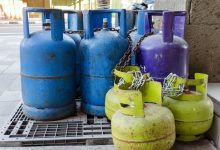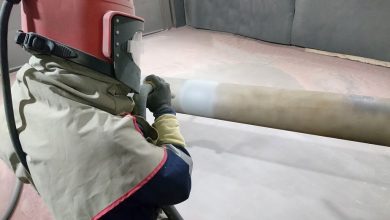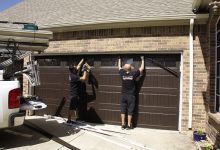6 Ways to Know Your Indoor Air Quality Is Bad

Index Of The Blog

In recent years, the international scientific community and environmental governance for improving health have shed some much-needed attention to indoor air quality. This is because people spend 90% of their time indoors, whether in their houses, offices, banks, gym, or church. It is now apparent that indoor air pollution is more of a health risk to the world’s population than outdoor pollution.
Without a doubt, the actual amount of air pollution differs from one home/building to another. If you want to know what you are dealing with, testing your indoor air and observing your environment is a good start. But before we look at the tell-tale signs of poor indoor air quality, what causes indoor air pollution?
Indoor air pollutants
- Carbon monoxide from smoke, perfumes and other building occupants
- Dust, asbestos, fiberglass, and gases from building materials
- Toxic vapor from cleaning materials, pesticides, glues, and disinfectants
- Gases and vapor from paint, carpet, furniture
- Dust mites
- Microbial contaminants such as fungi, mold, and bacteria from damp areas
- Radon from the soil
Signs of Poor Indoor Air Quality
- Allergies:
When you keep sneezing, coughing, and having a blocked nose, headache, and irritated eyes, it’s easy to associate them with weather changes, seasons, and allergens. However, more likely than not, your allergic reactions are caused by the poor air quality in your home or workplace.
The easiest way to differentiate the two causes is to pay attention to when the allergies start and stop. For example, if you wake up with a blocked nose, irritated eyes, and sneezing, but the symptoms disappear an hour after you leave the house, your home’s air quality is the culprit. If you leave home feeling okay and start getting sick a few minutes or hours after arriving at work, your working space is most likely the culprit.
- Respiratory conditions
Mold, chemicals, and second-hand smoke could quickly affect your lungs. If left unattended, you risk getting pneumonia and bronchitis in the long run. The initial respiratory health issues associated with poor air quality include wheezing, headaches, congestion, chronic coughing, and nosebleeds. In extreme cases, you will notice that you have trouble breathing in that space, but you feel better when you go outside.
- Dust buildup around vents and surfaces
If you are doing some remodeling in the building or somebody near you is constructing, seeing dust all over your surfaces is normal. You should clean and wipe the surfaces a couple of times to minimize the effects of dust.
However, if you still see the dust on vents and surfaces long after the construction is done, you need to check your HVAC unit. Chances are the unit sucked up enough dust, so every time you turn it on, all you do is distribute the dust throughout the house. Changing the air filter and cleaning the HVAC unit can help with that.
- Humidity issues
When humidity levels are too high, you will experience mold, mildew, and other microbial elements that thrive in such moist conditions. High humidity also encourages dust mites in your carpets and furniture.
On the other hand, low humidity can cause severe health problems, starting with dry, itchy eyes, dry skin, sinuses, colds, and infection, as well as dry hair.
Before you notice the effects of low humidity on your body, you can look out for other signs such as dry plants, peeling paint or wallpaper, and warping furniture. Fortunately, you can balance your humidity levels using a humidifier or dehumidifier and also have some indoor plants.
- Unpleasant odors
At any particular point in the day or night, there is a smell going on in your house/office. For example, you will have the smell of food right after meal times and the smell of cleaners after cleaning. This happens when you have optimum air circulation, so the smell of food is pushed outside after an hour or so, and fresh air comes in.
If you wake up in the morning and still smell last night’s dinner, there is poor air circulation. Poor air circulation will eventually lead to stale air because the smells are not being pushed outside, and fresh air is not coming in.
You can improve air circulation with a fan, open windows and doors, plenty of indoor plants, and keep the HVAC unit in tip-top shape.
- Uneven temperatures
Have you noticed some areas are warmer than others, and it’s not because of carpeting or thermostat? Uneven temperature is a big sign of poor air circulation that could be caused by a malfunctioning air conditioning unit.
While being warm or cold won’t affect humans significantly, the temperature and humidity in a particular room can encourage mold, mildew, dust mites, and other allergens to prosper. A malfunctioning HVAC can also distribute dust, pollen, and allergens throughout the house instead of improving air quality.
Air Quality Testing
Much like outdoor air pollution, you can see the pollutants in your home. In most cases, you won’t know they are there until your health starts to suffer. Besides keeping a clean house, maintaining your air conditioning unit, and planting indoor plants, testing your air quality is the best way to keep your indoor environment clean and healthy.
Mold Busters checks for high indoor pollution levels so you can take the necessary measures to improve your air quality. Much like home testing kits, you get professionals to give you full test results in 24 hours. These tests will help mold inspectors develop a proper remediation strategy.
Test for Mold and Radon
A typical air quality monitor will not catch mold and radon levels. While you may notice mold on your bread or moist surfaces like the basement garage, airborne mold is undetectable with a naked eye. A simple home mold test will help you identify if you have this dangerous microbial element.
Radon is another slow-acting but dangerous element that is associated with 21,000 lung cancer cases. It enters your home through cracks on the walls, floor, and pipes. You can buy a home radon test kits to know how much radon is in your home.












